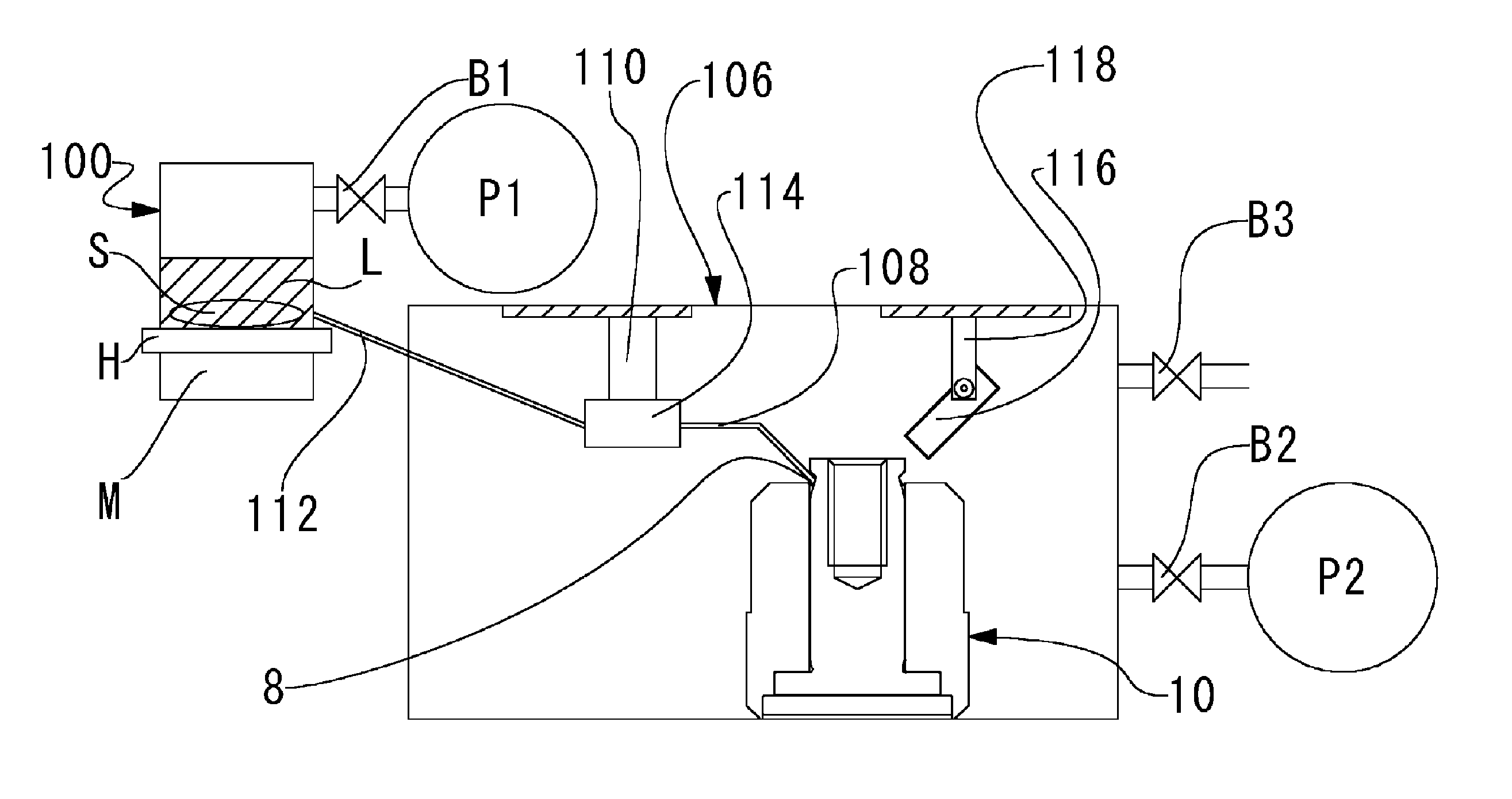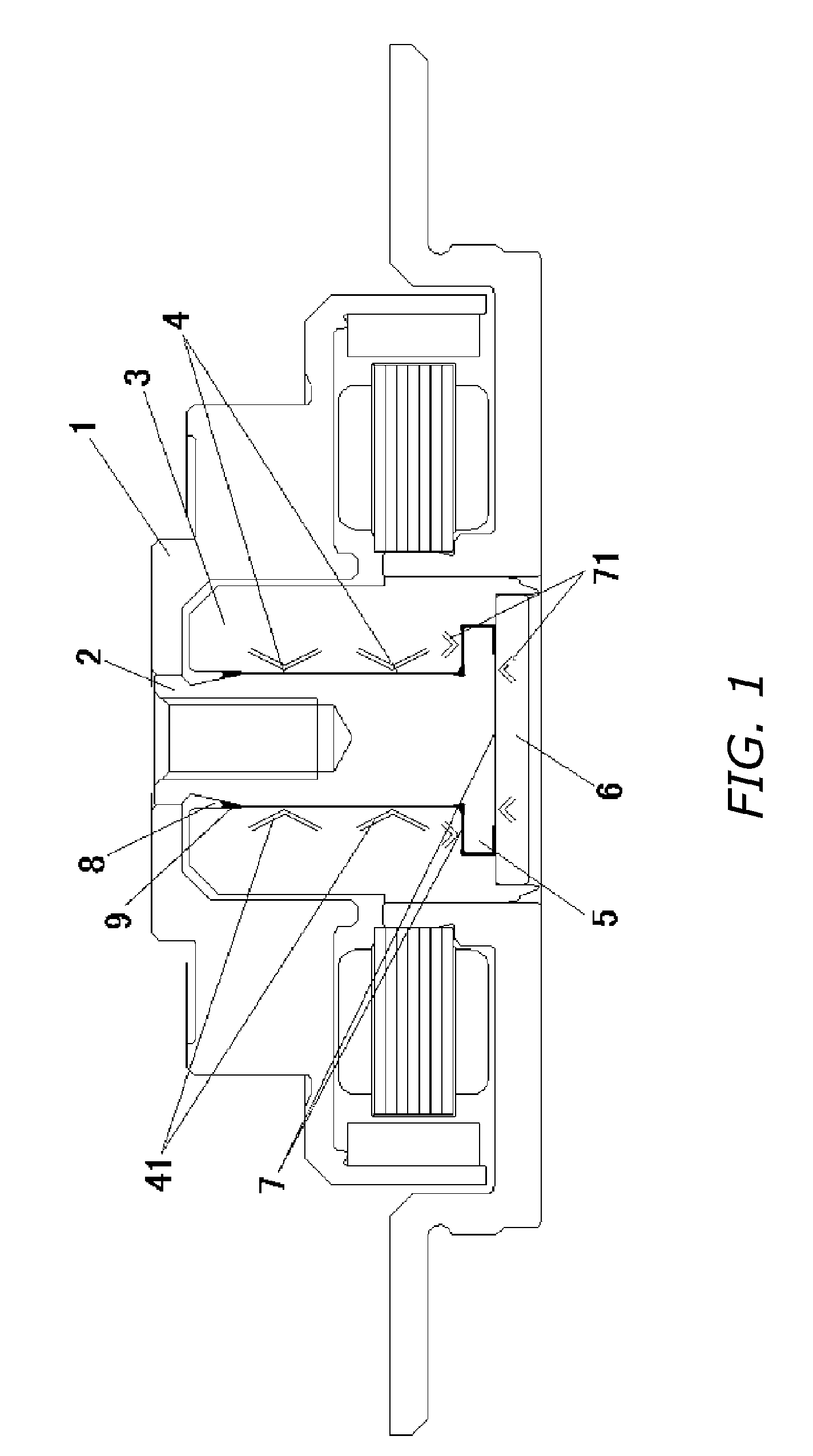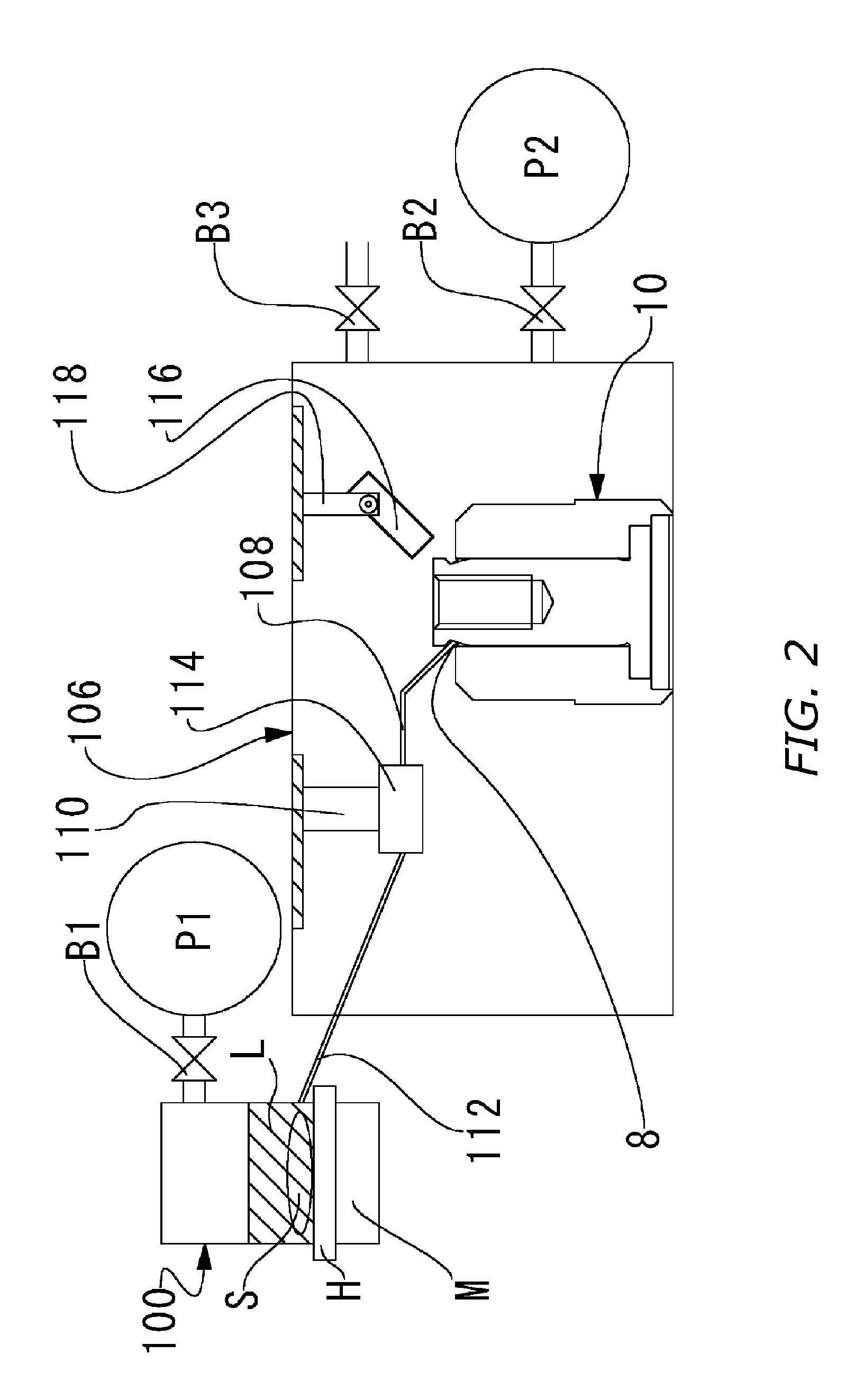Technique for filling bearing clearance of fluid-dynamic-pressure bearing unit with oil
a technology of fluid-dynamic-pressure bearings and oil, which is applied in the direction of magnetic recording, rotary piston liquid engine, record information storage, etc., can solve the problems of drop-off in productivity, endurance and reliability of the motor, and the inability to artificially create a perfect vacuum sta
- Summary
- Abstract
- Description
- Claims
- Application Information
AI Technical Summary
Benefits of technology
Problems solved by technology
Method used
Image
Examples
Embodiment Construction
[0024]The object of obviating problems originating in air bubbles being generated within oil charged into the bearing clearances in fluid-dynamic-pressure bearing units, before such problems occur, was realized without increasing operational man-hours needed or complicating the operational steps. The invention also accomplished the other object, which is to make it possible to single out the causative source of air bubbles in instances in which the generation of air bubbles is detected, without increasing man-hours needed or complicating the steps in the process.
[0025]Below, reference is made to the appended drawings to discuss a method of manufacturing fluid-dynamic-pressure bearing units according to the present invention. A fluid-dynamic-pressure bearing unit 10 has the same configuration as the fluid-dynamic-pressure bearing shown in FIG. 1 and therefore, the configuration thereof is not elaborated upon to avoid repetitive description.
[0026]In a method according to the present e...
PUM
| Property | Measurement | Unit |
|---|---|---|
| vacuum pressure | aaaaa | aaaaa |
| temperature | aaaaa | aaaaa |
| temperature | aaaaa | aaaaa |
Abstract
Description
Claims
Application Information
 Login to View More
Login to View More - R&D
- Intellectual Property
- Life Sciences
- Materials
- Tech Scout
- Unparalleled Data Quality
- Higher Quality Content
- 60% Fewer Hallucinations
Browse by: Latest US Patents, China's latest patents, Technical Efficacy Thesaurus, Application Domain, Technology Topic, Popular Technical Reports.
© 2025 PatSnap. All rights reserved.Legal|Privacy policy|Modern Slavery Act Transparency Statement|Sitemap|About US| Contact US: help@patsnap.com



